| Image | Rank | Name | Begin date | End date | Notes |
|---|
 | Major General | Gates, Horatio Horatio Gates | 1775-06-17June 17, 1775 | 1776-06-05June 5, 1776 | [1] |
 | Colonel | Reed, Joseph Joseph Reed | 1776-06-05June 5, 1776 | 1777-01-22January 22, 1777 | [1] |
 | Brigadier General | St. Clair, Arthur Arthur St. Clair | 1777-01-22January 22, 1777 | 1777-02-20February 20, 1777 | Acting Adjutant General
[1] |
 | Brigadier General | Weedon, George George Weedon | 1777-02-20February 20, 1777 | 1777-04-19April 19, 1777 | Acting Adjutant General
[1] |
| Colonel | Connor, Morgan Morgan Connor | 1777-04-19April 19, 1777 | 1777-06-18June 18, 1777 | [1] |
 | Colonel | Pickering, Timothy Timothy Pickering | 1777-06-18June 18, 1777 | 1778-01-05January 5, 1778 | [1] |
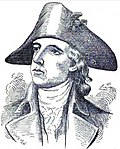 | Colonel | Scammel, Alexander Alexander Scammel | 1778-01-05January 5, 1778 | 1781-01-01January 1, 1781 | [1] |
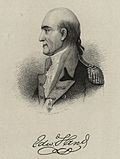 | Brigadier General | Hand, Edward Edward Hand | 1781-01-08January 8, 1781 | 1783-11-03November 3, 1783 | [1] |
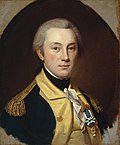 | Major | North, William 1 William North | 1783-11-05November 5, 1783 | 1787-10-28October 28, 1787 | [1] |
 | Lieutenant | Denny, Ebenezer 1 Ebenezer Denny | 1787-10-28October 28, 1787 | 1790-11-07November 7, 1790 | Acting Adjutant General
[1] |
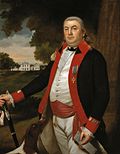 | Lieutenant | Pratt, John John Pratt | 1790-11-07November 7, 1790 | 1791-09-04September 4, 1791 | Acting Adjutant General
[1] |
 | Lieutenant Colonel | Sargent, Winthrop Winthrop Sargent | 1791-09-04September 4, 1791 | 1791-11-04November 4, 1791 | Acting Adjutant General
[1] |
 | Lieutenant | Denny, Ebenezer 2 Ebenezer Denny | 1791-11-04November 4, 1791 | 1792-03-10March 10, 1792 | Acting Adjutant General
[1] |
| Lieutenant | De Butts, Henry Henry De Butts | 1792-03-10March 10, 1792 | 1793-02-23February 23, 1793 | Acting Adjutant General
[1] |
| Major | Rudolph, Michael Michael Rudolph | 1793-02-23February 23, 1793 | 1793-07-17July 17, 1793 | Acting Adjutant General
[1] |
| Captain | Butler, Edward 1 Edward Butler | 1793-07-18July 18, 1793 | 1794-05-13May 13, 1794 | Acting Adjutant General
[1] |
| Major | Mills, John John Mills | 1794-05-13May 13, 1794 | 1796-02-27February 27, 1796 | Acting Adjutant General
[1] |
| Major | Haskell, Jonathan Jonathan Haskell | 1796-02-27February 27, 1796 | 1796-08-01August 1, 1796 | Acting Adjutant General
[1] |
| Captain | Butler, Edward 2 Edward Butler | 1796-08-01August 1, 1796 | 1797-02-27February 27, 1797 | Acting Adjutant General
[1] |
 | Major | Cushing Thomas H. 1 Thomas H. Cushing | 1797-02-27February 27, 1797 | 1798-07-19July 19, 1798 | Acting Adjutant General
[1] |
 | Lieutenant Colonel | North, William 2 William North | 1798-07-19July 19, 1798 | 1800-06-15June 15, 1800 | [1] |
 | Lieutenant Colonel | Cushing Thomas H. 2 Thomas H. Cushing | 1800-06-15June 15, 1800 | 1807-04-02April 2, 1807 | [1] |
| Major | Nicol, Abimael Y. Abimael Y. Nicoll | 1807-04-02April 2, 1807 | 1812-04-28April 28, 1812 | [1] |
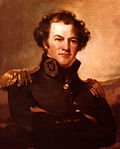 | Lieutenant Colonel | Macomb, Alexander Alexander Macomb | 1812-04-28April 28, 1812 | 1812-07-06July 6, 1812 | Acting Adjutant General
[1] |
 | Brigadier General | Cushing Thomas H. 3 Thomas H. Cushing | 1812-07-06July 6, 1812 | 1813-03-12March 12, 1813 | [1] |
 | Brigadier General | Pike, Zebulon Zebulon Pike | 1813-03-12March 12, 1813 | 1813-04-27April 27, 1813 | [1] |
| | vacant | 1813-04-27April 27, 1813 | 1814-05-19May 19, 1814 | [1] |
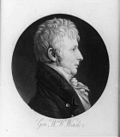 | Brigadier General | Winder, William H. William H. Winder | 1814-05-19May 19, 1814 | 1814-07-02July 2, 1814 | [1] |
 | Brigadier General | Parker, Daniel Daniel Parker | 1814-11-22November 22, 1814 | 1821-06-01June 1, 1821 | [1] |
 | Colonel | Gadsden, James James Gadsden | 1821-08-13August 13, 1821 | 1822-03-22March 22, 1822 | [1] |
 | Captain | Nourse, Charles Josephus Charles J. Nourse | 1822-03-08May 8, 1822 | 1825-03-07March 7, 1825 | Acting Adjutant General
[1] |
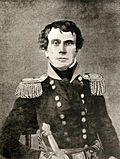 | Colonel | Jones, Roger Roger Jones | 1825-03-07March 7, 1825 | 1852-07-15July 15, 1852 | [1] |
 | Colonel | Cooper, Samuel Samuel Cooper | 1852-07-15July 15, 1852 | 1861-03-07March 7, 1861 | [1] |
 | Brigadier General | Thomas, Lorenzo Lorenzo Thomas | 1861-03-07March 7, 1861 | 1869-02-22February 22, 1869 | [1] |
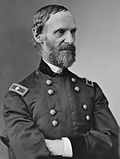 | Brigadier General | Townsend, Edward D. Edward D. Townsend | 1869-02-22February 22, 1869 | 1880-06-15June 15, 1880 | [1] |
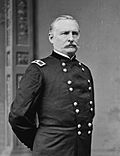 | Brigadier General | Drum, Richard C. Richard C. Drum | 1880-06-15June 15, 1880 | 1889-05-28May 28, 1889 | [1] |
 | Brigadier General | Kelton, John C. John C. Kelton | 1889-06-07June 7, 1889 | 1892-06-24June 24, 1892 | [1] |
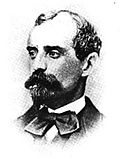 | Brigadier General | Williams, Robert Robert Williams | 1892-07-05July 5, 1892 | 1893-11-05November 5, 1893 | [1] |
 | Brigadier General | Ruggles, George D. George D. Ruggles | 1893-11-06November 6, 1893 | 1897-09-11September 11, 1897 | [1] |
 | Brigadier General | Breck, Samuel Samuel Breck | 1897-09-11September 11, 1897 | 1898-02-25February 25, 1898 | [1] |
 | Major General | Corbin, Henry C. Henry C. Corbin | 1898-02-25February 25, 1898 | 1904-04-23April 23, 1904 | [1] [2] |
 | Major General | Ainsworth, Fred C. Fred C. Ainsworth | 1904-04-23April 23, 1904 | 1912-02-16February 16, 1912 | [2] |
 | Brigadier General | Hall, William P. William P. Hall | 1912-02-17February 17, 1912 | 1912-06-11June 11, 1912 | [2] |
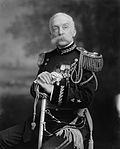 | Brigadier General | Andrews, George George Andrews | 1912-08-05August 5, 1912 | 1912-08-27August 27, 1914 | [2] |
 | Major General | McCain, Henry P. Henry P. McCain | 1914-08-27August 27, 1914 | 1918-08-27August 27, 1918 | [2] |
 | Major General | Harris, Peter C. Peter C. Harris | 1918-09-01September 1, 1918 | 1922-08-31August 31, 1922 | [2] |
 | Major General | Davis, Robert C. Robert C. Davis | 1922-09-01September 1, 1922 | 1927-07-01July 1, 1927 | [2] |
 | Major General | Wahl, Lutz Lutz Wahl | 1927-07-02July 2, 1927 | 1928-12-30December 30, 1928 | [2] |
 | Major General | Bridges, Charles H. Charles H. Bridges | 1928-12-31December 31, 1928 | 1933-02-01February 1, 1933 | [2] |
 | Major General | McKinley, James F. James F. McKinley | 1933-02-02February 2, 1933 | 1935-10-31October 31, 1935 | [2] |
 | Major General | Conley, Edgar T. Edgar T. Conley | 1935-11-01November 1, 1935 | 1938-04-30April 30, 1938 | [2] |
 | Major General | Adams, Emory S. Emory S. Adams | 1938-05-01May 1, 1938 | 1942-02-28February 28, 1942 | [2] |
 | Major General | Ulio, James A. James A. Ulio | 1942-03-01March 1, 1942 | 1946-01-31January 31, 1946 | [2] |
 | Major General | Witsell, Edward F. Edward F. Witsell | 1946-02-01February 1, 1946 | 1951-06-30June 30, 1951 | [2] |
 | Major General | Bergin, William E. William E. Bergin | 1951-07-01July 1, 1951 | 1954-05-31May 31, 1954 | [2] |
| Major General | Klein, John A. John A. Klein | 1954-06-01June 1, 1954 | 1956-12-31December 31, 1956 | [2] |
 | Major General | Jones, Herbert M. Herbert M. Jones | 1957-01-01January 1, 1957 | 1958-10-31October 31, 1958 | [2] |
| Major General | Lee, Robert V. Robert V. Lee | 1958-11-01November 1, 1958 | 1961-09-30September 30, 1961 | [2] |
| Major General | Lambert, Joe C. Joe C. Lambert | 1961-10-01October 1, 1961 | 1966-07-31July 31, 1966 | [2] |
| Major General | Wickham, Kenneth G. Kenneth G. Wickham | 1966-08-011966 | 1971-01-011971 | [3] |
| Major General | Bowers, Verne L. Verne L. Bowers | 1971-01-011971 | 1975-01-011975 | [3] |
| Major General | Smith, Paul T. Paul T. Smith | 1975-01-011975 | 1977-01-011977 | [3] |
| Major General | Pennington, James C. James C. Pennington | 1977-01-011977 | 1981-01-011981 | [3] |
 | Major General | Joyce, Robert M. Robert M. Joyce | 1981-01-011981 | 1984-01-011984 | [4] |
 | Brigadier General | Delandro, Donald J. Donald J. Delandro | 1984-01-011984 | 1985-01-011985 | [4] |
 | Brigadier General | Hedberg, Mildred E. Mildred E. Hedberg | 1985-01-011985 | 1986-01-011986 | [4] |
 | Brigadier General | Dilworth, Robert Lexow Robert L. Dilworth | 1986-01-011986 | 1988-01-011988 | [4] |
 | Brigadier General | Meehan, William J., II William J. Meehan II | 1988-01-011988 | 1990-01-011990 | [4] |
 | Brigadier General | Sikora, Thomas F. Thomas F. Sikora | 1990-01-011990 | 1991-01-011991 | [4] |
 | Brigadier General | Hickerson, Patricia P. Patricia P. Hickerson | 1991-01-011991 | 1994-01-011994 | [4] |
 | Brigadier General | Smith, Stephen R.Stephen R. Smith | 1994-01-011994 | 1995-01-011995 | [4] |
 | Brigadier General | Simms, Earl M. Earl M. Simms | 1995-01-011995 | 1998-01-011998 | [4] |
 | Brigadier General | Frost, Kathryn G. Kathryn G. Frost | 1998-01-011998 | 2002-08-012002 | [4] |
 | Brigadier General | Farrisee, Gina S. Gina S. Farrisee | 2002-08-012002 | 2004-08-012004 | [4] |
 | Brigadier General | Porter, E. Eric Ernest E. Porter | 2004-08-012004 | 2006-06-012006 | [4] |
 | Brigadier General | Jones, Reuben D. Reuben D. Jones | 2006-06-012006 | 2009-07-08July 8, 2009 | [4] [5] |
 | Brigadier General | Mustion, Richard P. Richard P. Mustion | 2009-07-08July 8, 2009 | 2011-07-28July 28, 2011 | [5] [6] |
 | Brigadier General | Evans, Jason T. Jason T. Evans | 2011-07-28July 28, 2011 | 2013-03-11March 11, 2013 | [6] [7] |
 | Brigadier General | MacEwen, David K. David K. MacEwen | 2013-03-11March 11, 2013 | 2015-03-20March 20, 2015 | [7] [8] |
 | Brigadier General | Iacocca, James T. James T. Iacocca | 2015-03-20March 20, 2015 | 2017-09-21September 21, 2017 | [8] [9] |
 | Brigadier General | Bennett, Robert W., Jr. Robert W. Bennett Jr. | 2017-09-21September 21, 2017 | 2020-070-07July 7, 2020 | [9] |
 | Brigadier General | Rampy, Hope C. Hope C. Rampy | 2020-07-07July 7, 2020 | 2022-06-30June 30, 2022 | [10] |
 | Brigadier General | Johnson, Gregory S. Gregory S. Johnson | 2022-06-30June 30, 2022 | 2024-07-10July 10, 2024 | [11] |
 | Brigadier General | Smith, Adam D. Adam D. Smith | 2024-07-10July 10, 2024 | Incumbent | [12] |
|


































































